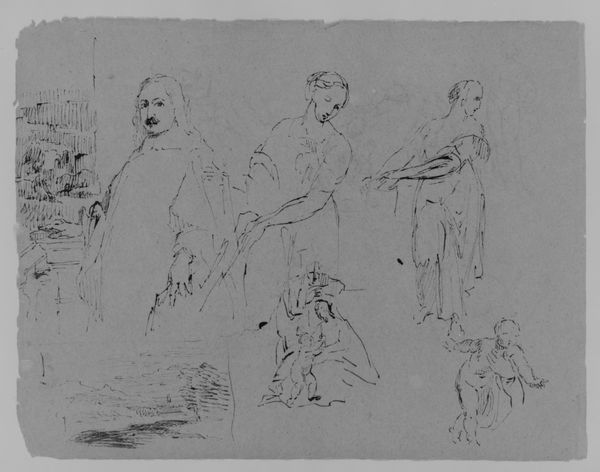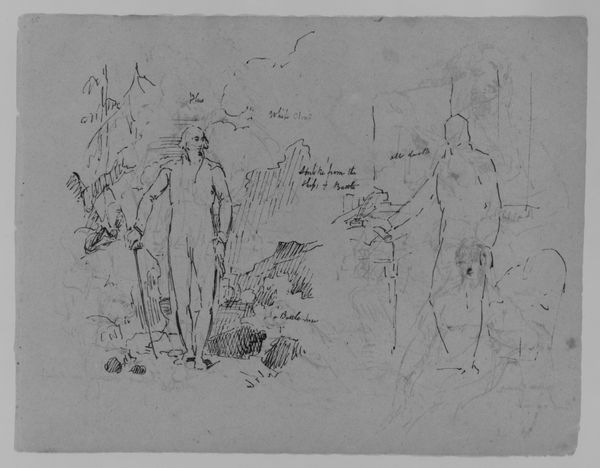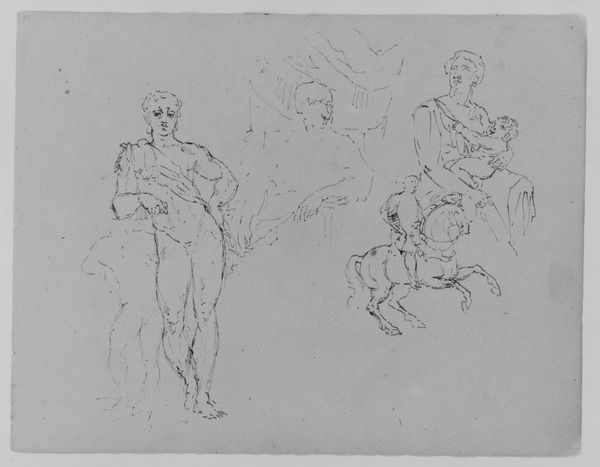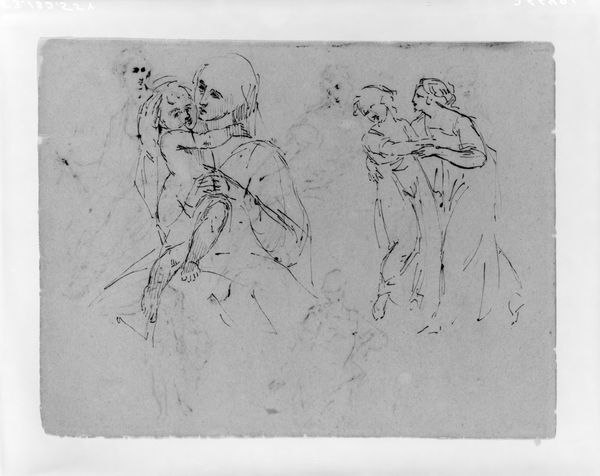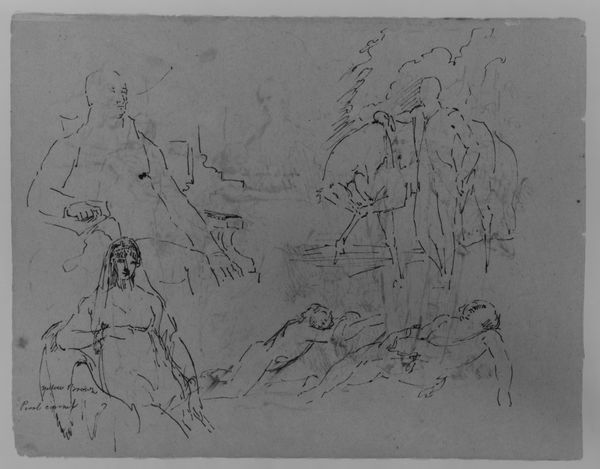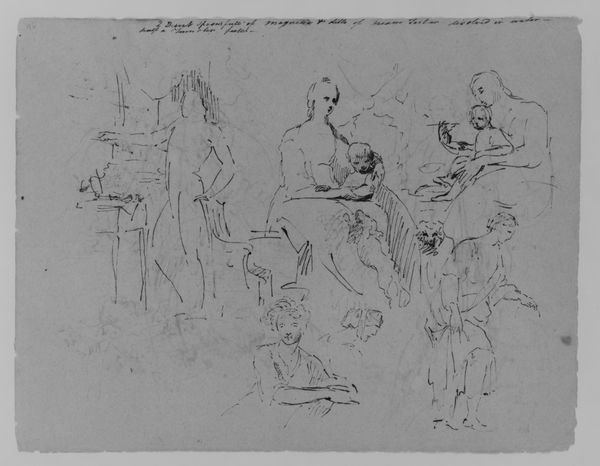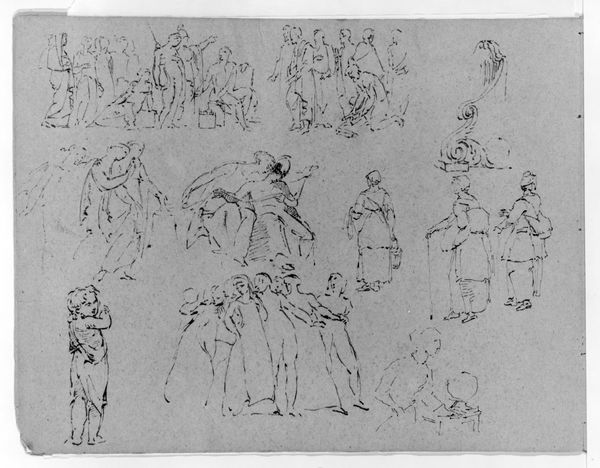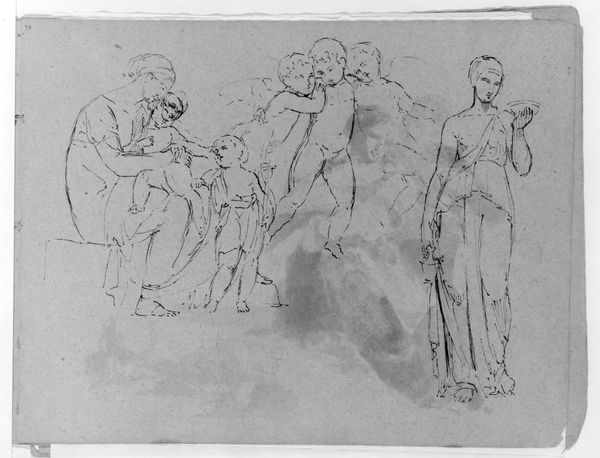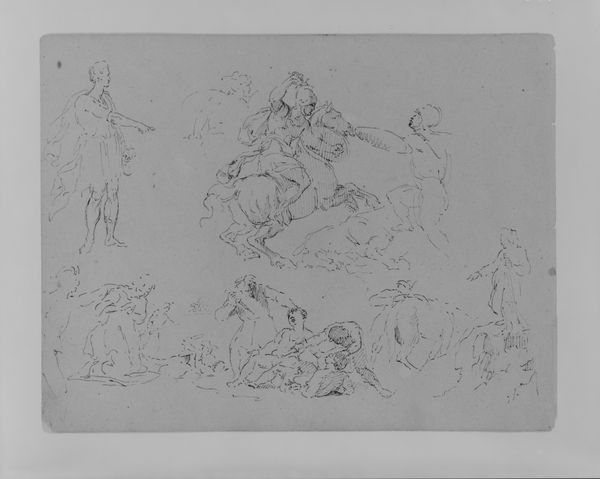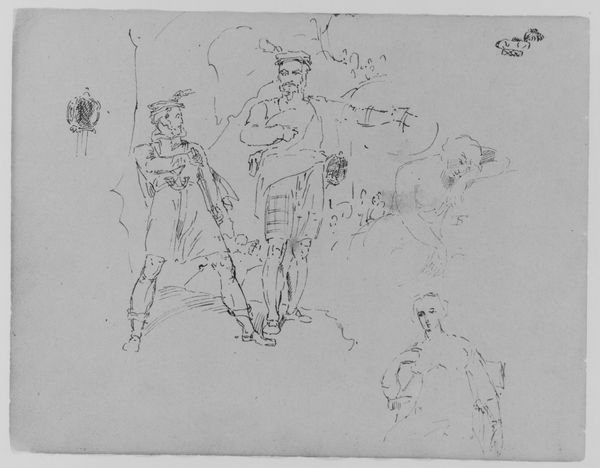
Charles I, after Van Dyke Dismounted Equestrian Portrait; Colonel George Kitts Coussmaker, after Reynolds (from Sketchbook) 1810 - 1820
0:00
0:00
drawing, ink, pen
#
portrait
#
drawing
#
pencil sketch
#
landscape
#
figuration
#
ink
#
pen-ink sketch
#
horse
#
men
#
pen
Dimensions: 9 x 11 1/2 in. (22.9 x 29.2 cm)
Copyright: Public Domain
Thomas Sully rendered these sketches after Van Dyke and Reynolds, using graphite on paper in the early 19th century. Notice how the soft, grey graphite gives a delicate, almost ghostly quality to the figures. Sully’s rapid strokes capture the essence of his subjects, from regal figures to equestrian portraits. The immediacy of graphite allows for quick studies, capturing light and form with remarkable efficiency, as we can appreciate the artist's skill in replicating famous artworks. Graphite itself, though a humble material, becomes a conduit for artistic expression and skill. The paper support also plays a role, offering a receptive surface for the graphite to leave its mark. These sketches remind us that every artwork, regardless of its medium, is the product of labor, skill, and a deep engagement with materials. By considering the making process, we can gain a richer appreciation for the artistry involved, blurring the lines between fine art and craft.
Comments
No comments
Be the first to comment and join the conversation on the ultimate creative platform.
